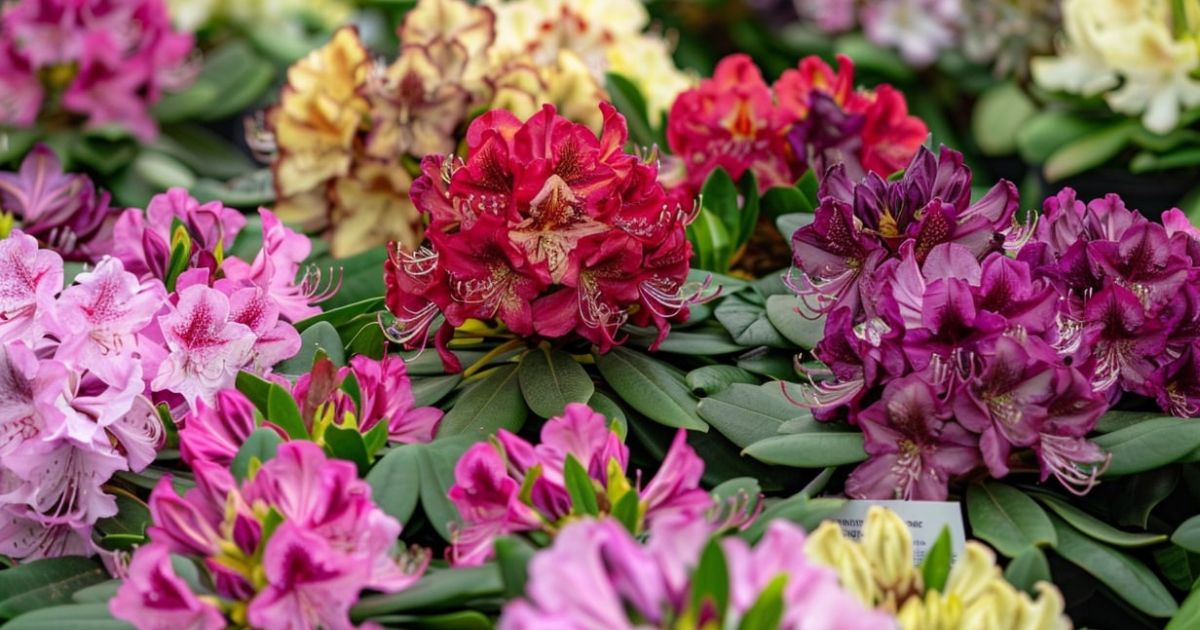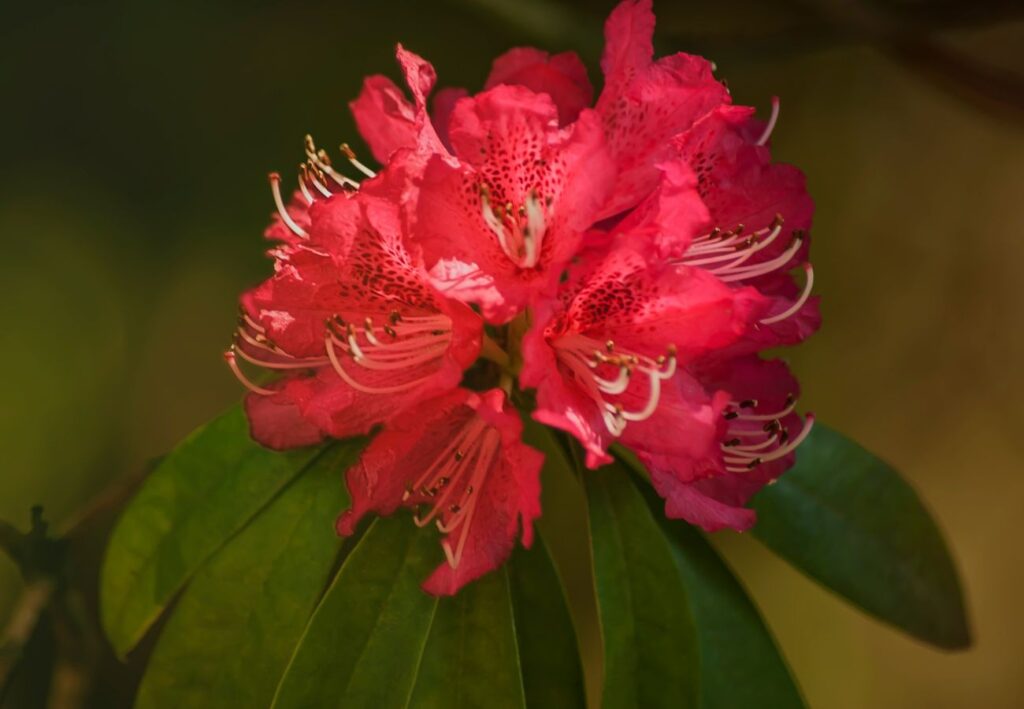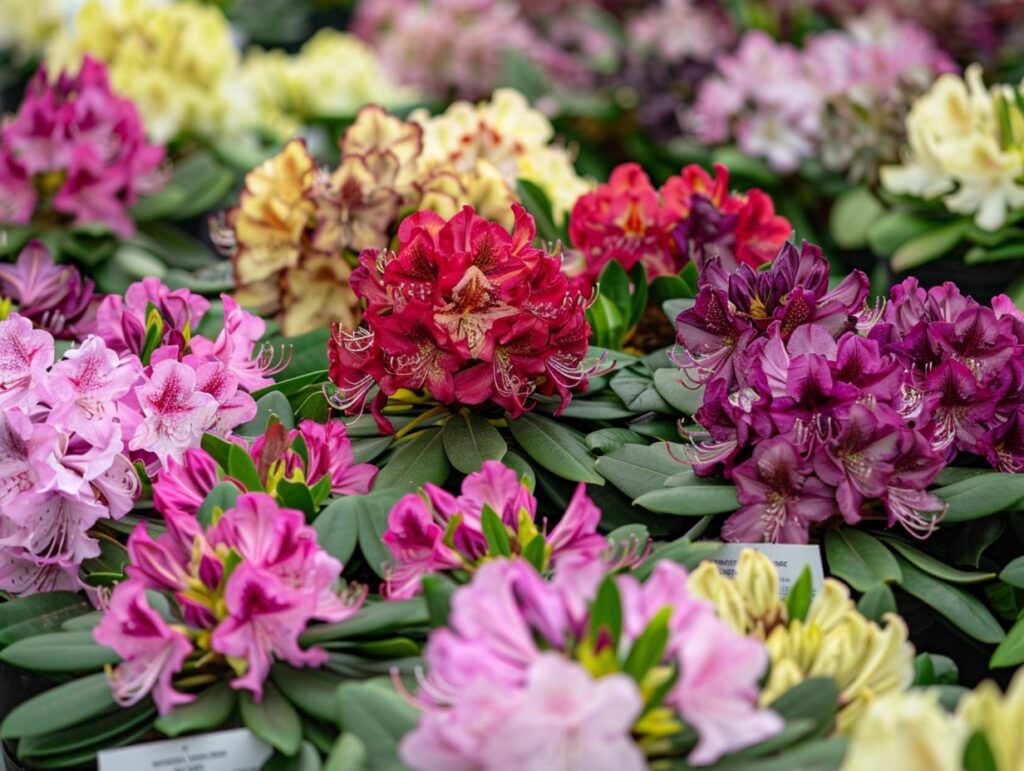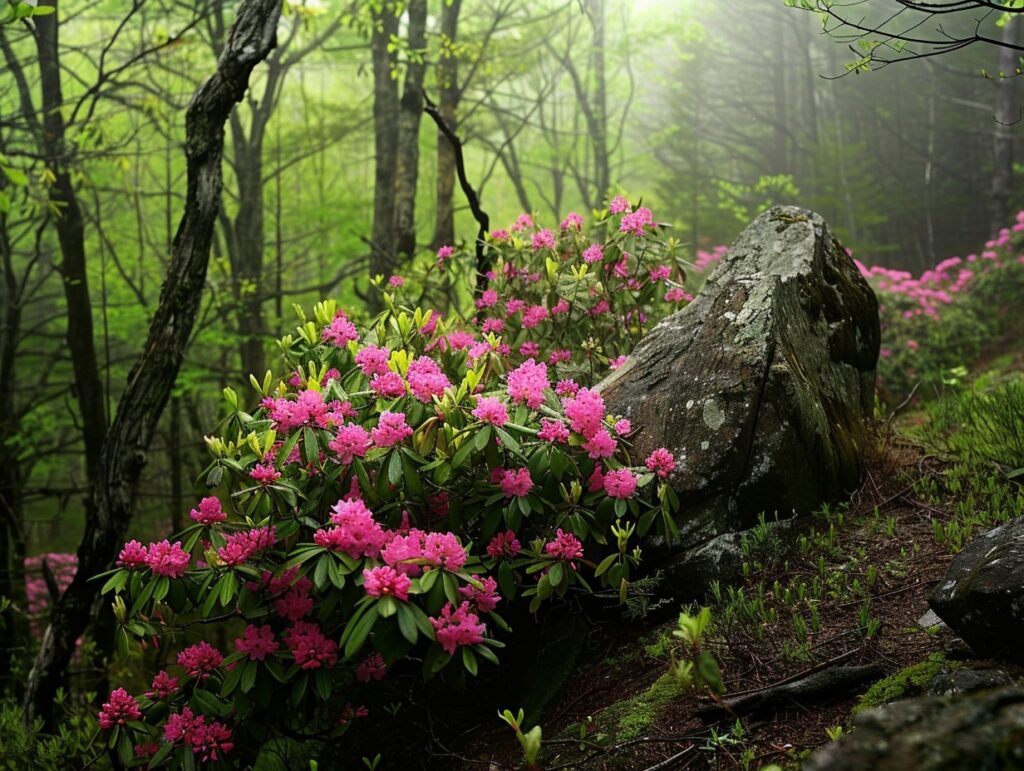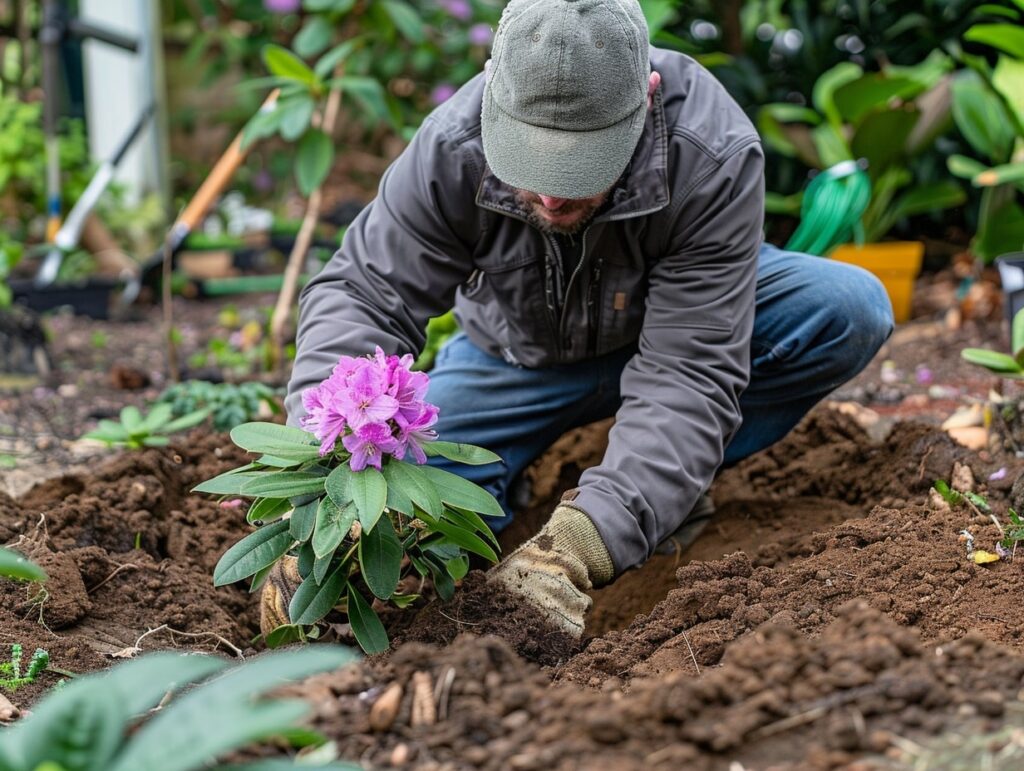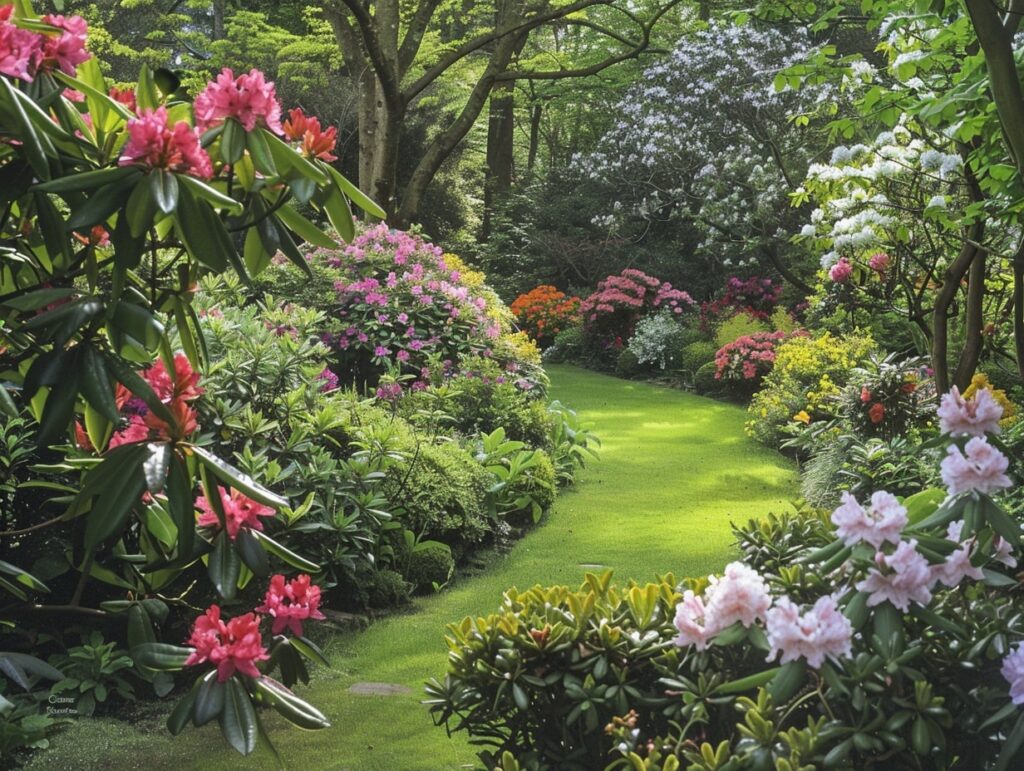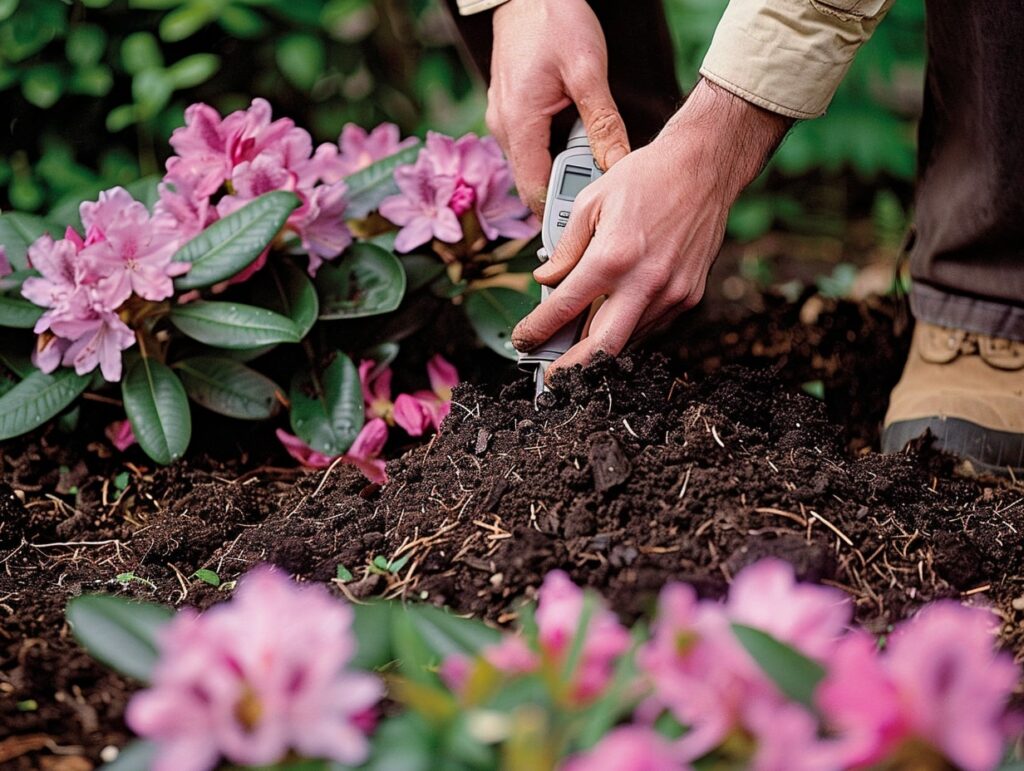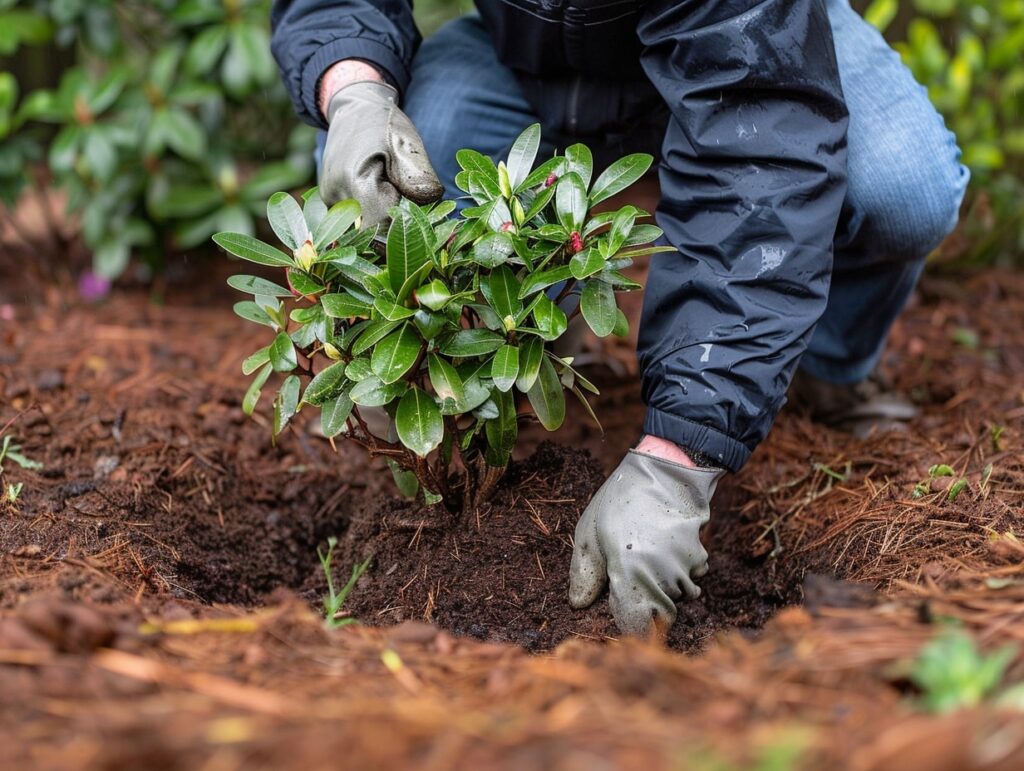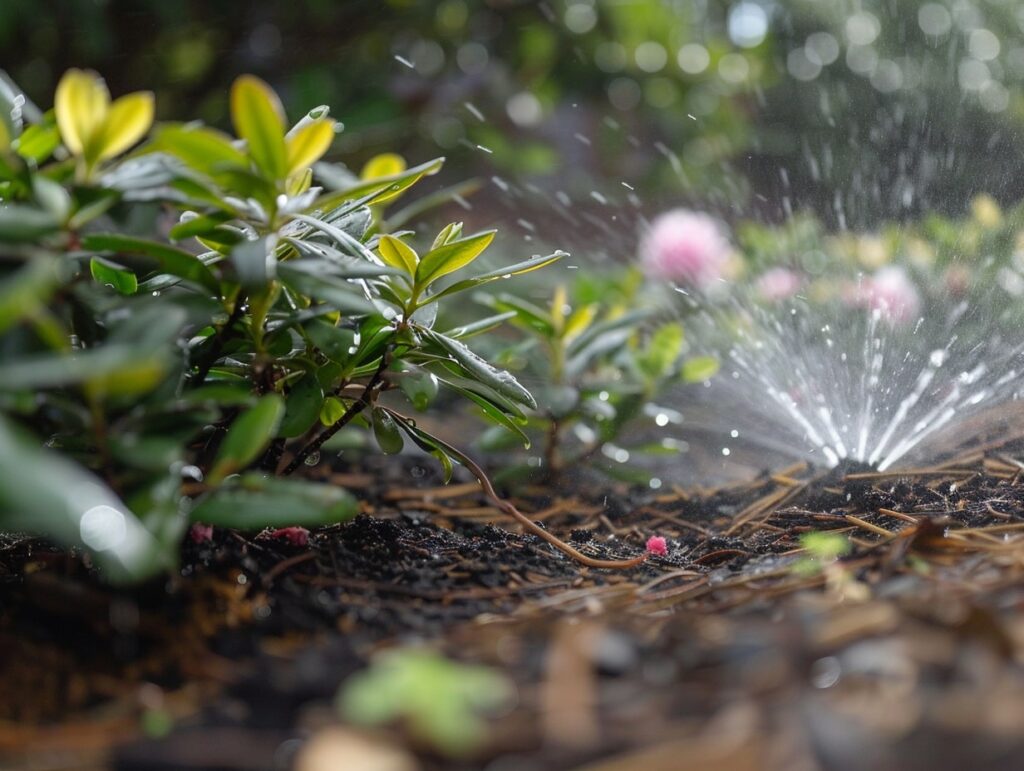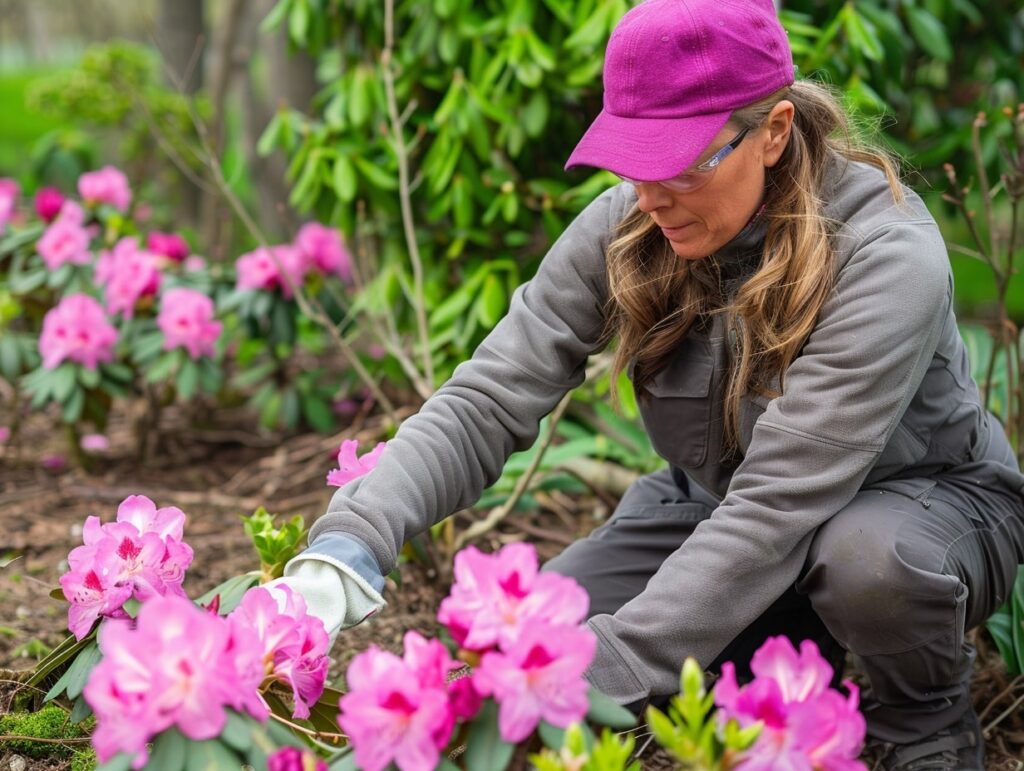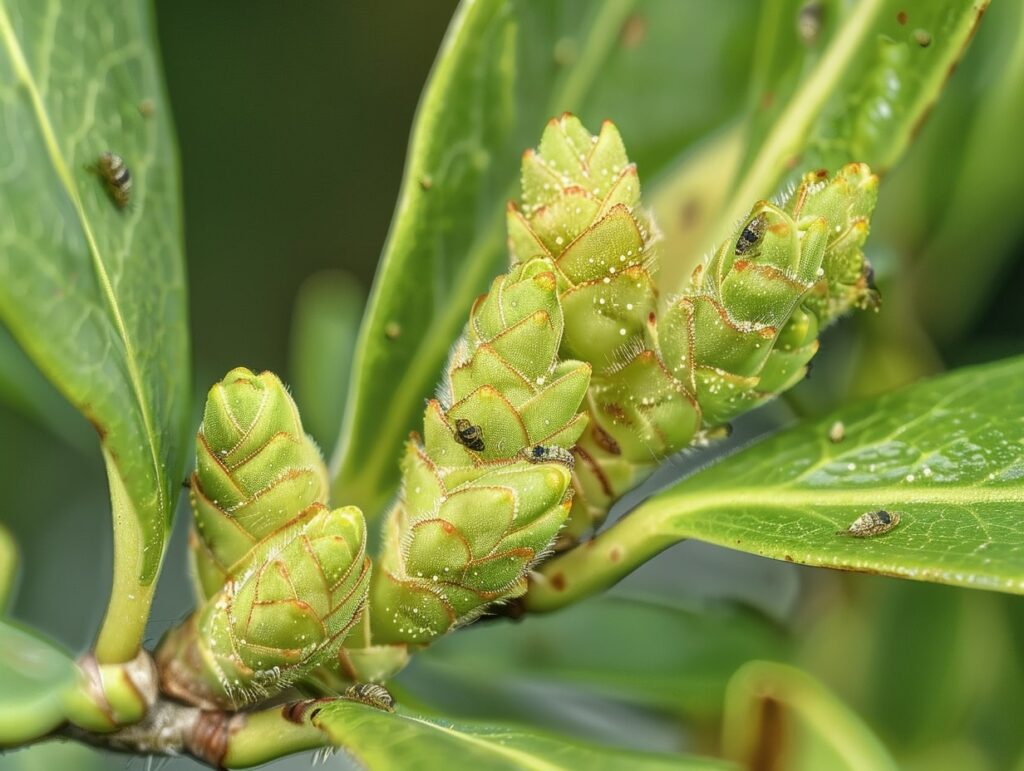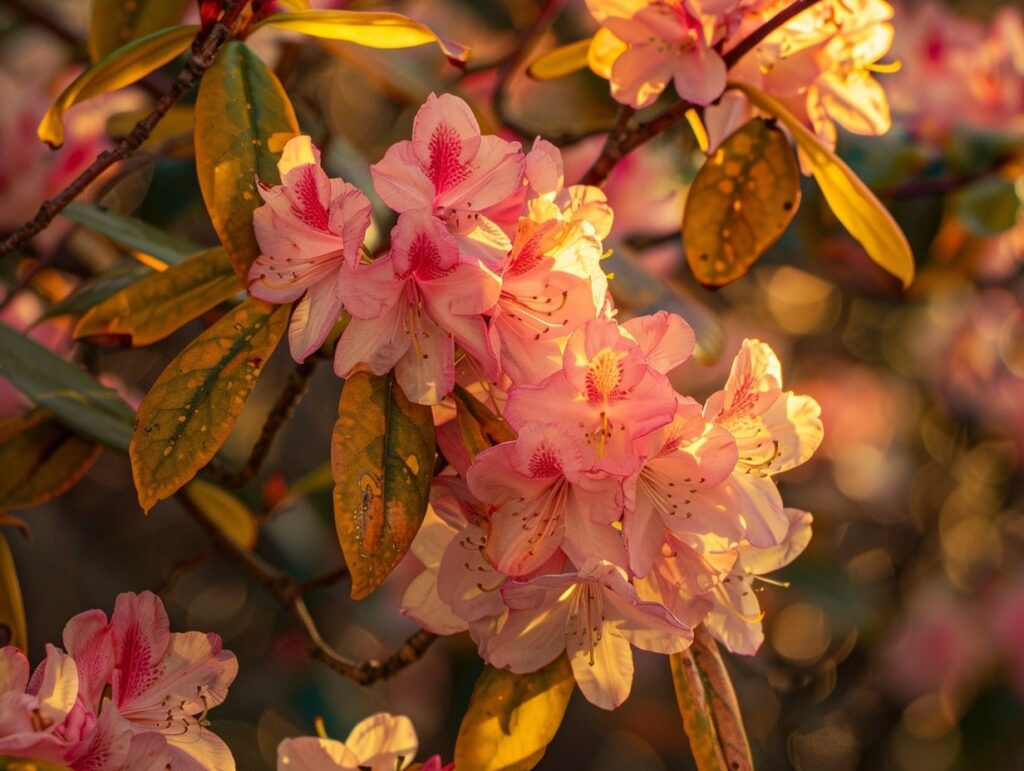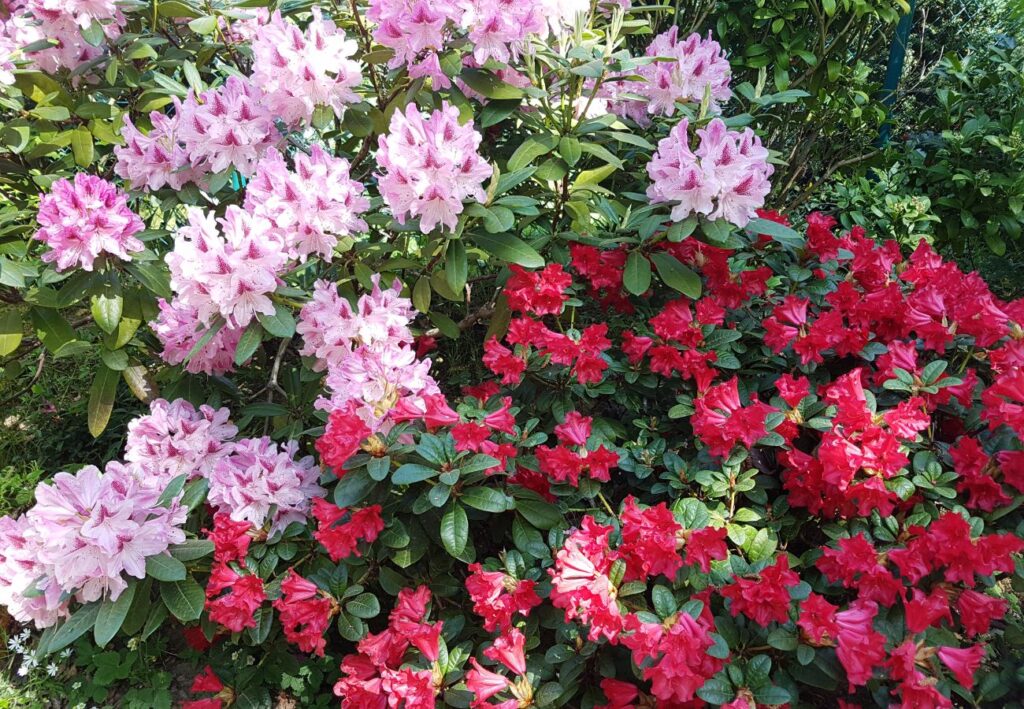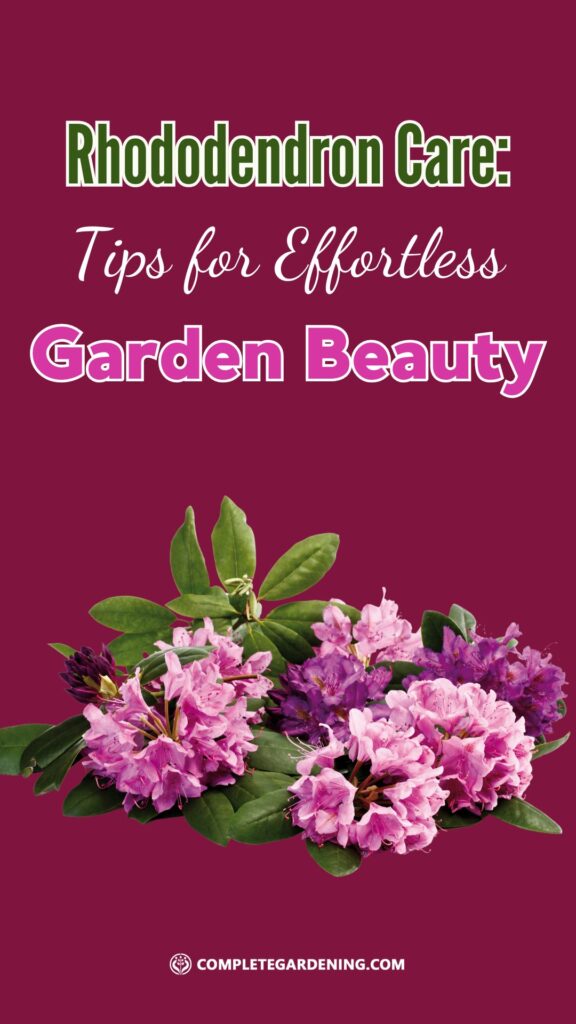Imagine stepping into your garden and being greeted by a riot of vibrant colors, each bloom more dazzling than the last. That’s the magic of rhododendrons.
These garden favorites aren’t just a feast for the eyes; they’re a testament to your gardening prowess. But how do you achieve such splendor? It all starts with the right soil, the perfect amount of shade, and a few essential care tips.
In this guide, we’ll reveal how to nurture your rhododendrons to perfection, ensuring they remain healthy and breathtakingly beautiful. Curious to learn more?
Understanding Rhododendrons
Rhododendrons are beautiful, multi-faceted plants that have a rich history and come in numerous species and varieties. They thrive in specific natural habitats and have unique historical contexts.
Species and Varieties
Rhododendrons belong to the large Ericaceae family, with over 1,000 species. This diversity means you can find rhododendrons in many colors, sizes, and shapes.
Common species include Rhododendron ponticum, Rhododendron arboreum, and Rhododendron catawbiense.
There are also thousands of cultivars, bred for specific traits like flower color and bloom time. Some popular varieties include ‘Nova Zembla’, ‘Purple Splendor’, and ‘Cunningham’s White’.
Each variety can offer unique characteristics, making the rhododendron a versatile choice for many gardens.
Natural Habitat and History
Rhododendrons are native to regions with temperate climates, such as the Himalayas, Southeast Asia, and parts of North America. These plants thrive in cool, moist environments with well-drained acidic soil, often found in forested or mountainous areas.
Historically, rhododendrons have been valued for their ornamental beauty and adaptability to various garden settings. Their cultivation dates back centuries, with plant explorers and botanists collecting and breeding new varieties since the 19th century.
Successful cultivation of rhododendrons outside their native range often requires mimicking their natural habitat conditions.
Planting Your Rhododendron
To ensure your rhododendron thrives, focus on selecting the ideal planting location, preparing the soil properly, and planting at the optimal time.
Choosing the Right Location
Location is crucial for rhododendrons. These plants prefer partial shade, ideally with morning sun and afternoon shade. Too much direct sunlight can cause leaf scorch, while heavy shade may result in poor flowering.
Wind protection is also important. Planting near a north or east-facing wall can be beneficial. Avoid low-lying areas where water can accumulate, as rhododendrons are susceptible to root rot.
Check for adequate space. Rhododendrons can spread out, so give them room to grow without crowding near other plants.
Soil Preparation and Requirements
Rhododendrons require acidic soil. Aim for a pH between 4.5 and 6.0. Soil testing kits are available at garden centers to ensure your soil meets this requirement.
Good drainage is essential. They prefer moist, well-drained soil. Amend heavy clay soils with organic matter like compost or peat moss. Sandy soils may require the addition of moisture-retentive materials.
Mix and prepare the soil in the planting area with compost, pine bark, or other organic materials to improve texture and nutrient content.
Planting Technique and Timing
Plant rhododendrons in fall or early spring. Cooler temperatures and frequent rains help establish the roots before the summer heat.
Dig a hole about twice as wide and just as deep as the root ball. Place the plant in the hole so the top of the root ball is slightly above ground level.
Backfill with the amended soil, gently firming it around the roots. Water thoroughly to settle the soil and eliminate air pockets. Mulch around the base with pine needles or bark to retain moisture and deter weeds.
After planting, water regularly but avoid oversaturation. Establish a consistent water schedule during the first growing season.
Rhododendron Maintenance
Proper watering and fertilizing are critical factors in maintaining healthy Rhododendrons.
Watering and Moisture Control
Rhododendrons need consistent moisture levels. Ensure the soil is well-drained yet retains enough moisture. Overwatering can lead to root rot, while underwatering can cause the leaves to wilt.
During dry periods, water deeply twice a week. Use mulch around the base to preserve moisture and prevent weeds. Pine needles or bark are excellent choices for mulch. Check the soil frequently to maintain the right moisture balance.
Make sure water reaches the root zone. Using a soaker hose or a drip irrigation system can help achieve this without wetting the foliage excessively. Wet leaves, especially overnight, can encourage fungal diseases, so it’s crucial to apply water directly to the soil.
Fertilizing and Nutrient Management
Rhododendrons benefit from a balanced fertilizer applied at the right times. Use a specialized rhododendron or azalea fertilizer, which is typically formulated for acid-loving plants.
Apply fertilizer in early spring as new growth begins, using the manufacturer’s recommended rate. Avoid fertilizing after mid-summer, which can encourage new growth that becomes damaged by winter frost.
Incorporate compost or well-rotted manure into the soil annually to improve soil structure and nutrient content. Rhododendrons prefer a pH between 4.5 and 6.0. Regularly test your soil and adjust the pH if necessary using sulfur or lime.
Feeding with micronutrients like iron and magnesium can also help if you notice yellowing leaves, a common sign of nutrient deficiency in these plants.
Common Issues and Solutions
When growing rhododendrons, you might encounter various challenges, from pests and diseases to environmental stressors. Here are some key issues and how to address them.
Pest and Disease Management
Rhododendrons can be susceptible to pests such as aphids, spider mites, and lace bugs. Aphids cause leaf curling and yellowing. To manage these pests, use insecticidal soap or neem oil. Spider mites can be controlled with regular water sprays to keep humidity up.
Lace bugs often leave stippling marks on the foliage. Applying systemic insecticides or horticultural oils can help manage infestations. For fungal diseases like powdery mildew or root rot, ensure good drainage and avoid overhead watering.
Fungicides can also be effective for managing fungal infections.
Dealing with Environmental Stress
Environmental stress can severely impact rhododendrons. Too much sun can cause leaf scorch, so plant rhododendrons in a location with partial shade. Water stress is another common issue; ensure the soil is consistently moist but not waterlogged.
Nutrient deficiencies may cause yellowing leaves. Fertilize with an acid-loving plant fertilizer to maintain the soil’s pH balance. Cold stress can be mitigated by mulching around the base and protecting the plant with burlap during harsh winters.
Understanding and cultivating rhododendrons can transform your garden into a vibrant, colorful haven. These multi-faceted plants, with their rich history and diverse species, offer a stunning display of blooms that can enhance any garden.
From the towering Rhododendron arboreum to the more compact Rhododendron catawbiense, there is a variety to suit every gardener’s needs.
Rhododendrons thrive in temperate climates and require specific conditions to flourish. By choosing the right location, preparing the soil correctly, and planting at the optimal time, you can set the stage for healthy growth.
Ensuring proper watering and moisture control, along with appropriate fertilization, will help maintain the plant’s health and vigor.
Addressing common issues such as pests, diseases, and environmental stressors is crucial for the longevity and beauty of your rhododendrons. By being proactive and attentive to their needs, you can prevent problems and enjoy the full splendor of these remarkable plants.
Rhododendrons are not just beautiful additions to your garden; they are a testament to nature’s ability to adapt and thrive in various environments. Their historical significance and ornamental value make them a cherished choice for gardeners worldwide.
By following the guidelines outlined in this article, you can cultivate a thriving rhododendron garden that will be the envy of all who see it.
Embrace the journey of growing rhododendrons and let their enchanting blooms bring joy and beauty to your outdoor space year after year.
